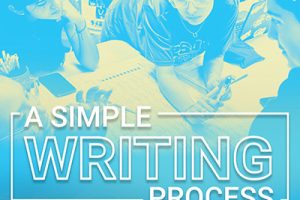Recipe for success
Step-by-step Instructions for writing the Feature Story
1. Dump the whole lump of facts into the skillet. Remember, you can never hide a shortage of facts. Gather whatever you can by observation, interviews and research.
2. Sift through the information you’ve collected in your skillet. You need to determine the approach of this dish. What is it you are trying to say?
3. After you’ve sifted through the Facts and removed the grease and unnecessary information, dump in each cup of vegetable-the musty brussels sprouts (smell), the crunchy carrot (sound), the rigid corn kernels (touch), the tart cabbage (taste) and the juicy tomato (sight). These bits of sensory detail will add flavor to your facts.
4. Slowly mix your concoction, blending all the ingredients. Your intended approach and focus is to create a suitable lead. It’s okay if you need to make another one later-sometimes the first batch isn’t quite right. As you write your feature lead, don’t force yourself to define what kind it is or keep it to so many words. You can begin however you wish-just remember what are you trying to say?
5. Now, you’ve got the first batch (a.k.a. first draft) of a lead. Knowing that a feature story is a narration that tells a story from beginning to end, keep right on cooking. Don’t stop; complete the draft. After you let it cool for a while, you’ll need to begin Phase 2-molding and shaping.
6. As you pull it out of the oven, don’t be alarmed. Your first attempt will not be a masterpiece. So, let’s give it a taste. The lead sentence requires much attention. Let’s review. Remembering your approach, your point and your message, do your first paragraphs set the theme?
7. Now, find your spice rack; we’re checking the tone and mood of your feature. Add a little Tabasco sauce for peppery, fun stories on the class clown and your principal who is also a magician. Add a few dashes of Oregano for the feature on the Italian skateboarder, who came off a little sassy. In other words, dress the tone of the story to fit the content? If it doesn’t, add the spices and revise some of the wording so it does.
Although you have some latitude to move away from hard news journalism and can create emotion through a careful choice of words, you are on thin ice in regards to expressing personal opinion.
If you aren’t sure the tone is right or how to improve it, observe the details included. Are there descriptions of the setting/scene; do they convey the right impression? Look at how you physically and emotionally captured the subject; does it pass to the accuracy of the tone? Do the quotes you’ve added bring flavor to the subject that wasn’t already apparent from previous copy?
8. Now that you’ve taken the necessary prep-cooking precautions for tone & mood, you need to look over the appearance of your story. Does it need more color? Splash vivid words. Smear imagination and concrete images. Sprinkle action verbs and splatter sensory descriptions.
9. When the outside looks appetizing, take a goodlook at the inside. Does the lead and focus begin and end? Does the conclusion tie in with the theme and close the message?
The last sentence or two can be crucial to a feature story. A news story simply ends when the reporter runs out of information. However, a feature needs to wrap up in the same tone or mood that was emphasized throughout the dish.
Tag:feature story, writing



